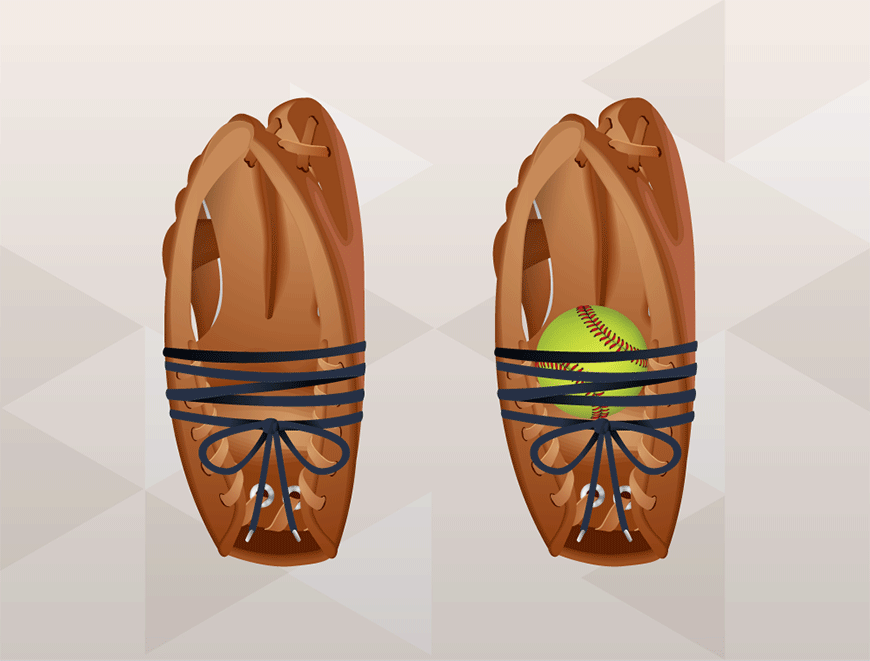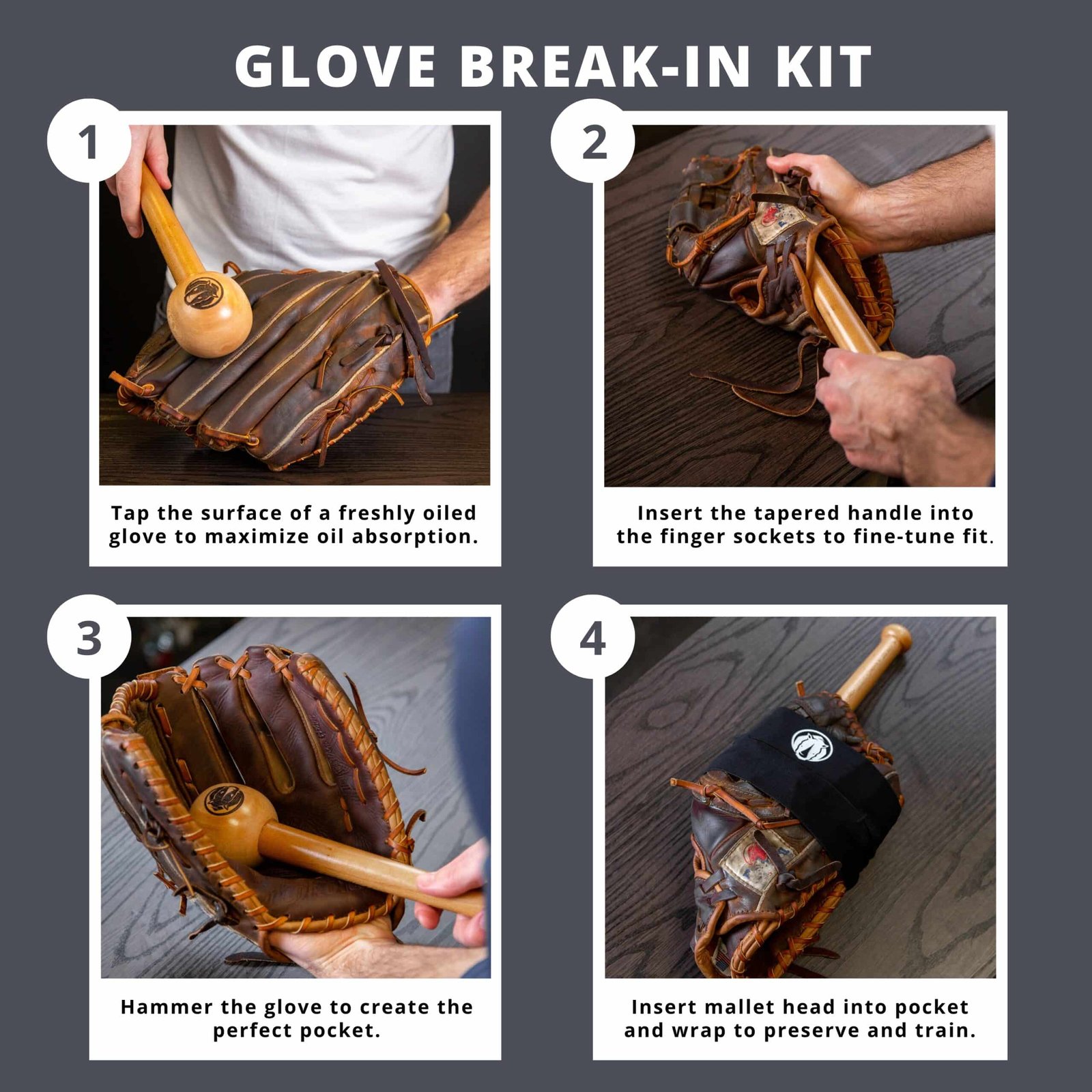To condition a baseball glove, you need to soften and protect the leather. This ensures better performance and a longer lifespan.
Baseball gloves are more than just gear; they are an extension of your hand. Proper conditioning keeps them flexible and strong. This process involves cleaning, applying oils, and breaking in the leather. It helps maintain the glove’s shape and comfort.
Whether you are a beginner or a seasoned player, conditioning your glove is crucial. It keeps the leather from cracking and improves grip. In this guide, we will explain the steps to condition a baseball glove effectively. Follow these steps to ensure your glove remains in top condition, ready for every game.

Credit: www.youtube.com
Selecting The Right Glove
Selecting the right glove is crucial for any baseball player. The right glove can improve your game and protect your hand. To help you choose, consider the type and size of the glove. Each type serves a different purpose, and the size must fit your hand properly.
Types Of Baseball Gloves
There are several types of baseball gloves. Each type has a unique design for a specific position. The main types include infield gloves, outfield gloves, catcher’s mitts, first baseman’s mitts, and pitcher’s gloves.
Infield gloves are small and have shallow pockets. They help players quickly retrieve and throw the ball. Outfield gloves are larger with deep pockets. They help catch fly balls with ease.
Catcher’s mitts are heavily padded. They protect the hand from fast pitches. First baseman’s mitts are also large and padded. They help scoop up low throws. Pitcher’s gloves have closed webs. They hide the pitcher’s grip from the batter.
Choosing The Right Size
Choosing the right size glove is important. A glove that is too big or too small can hinder your performance. To find the right size, measure the length from the tip of your index finger to the base of your hand.
For young players, sizes range from 9 to 11 inches. For adult infielders, sizes range from 11 to 12 inches. Outfielders typically use gloves from 12 to 13 inches. Catcher’s mitts and first baseman’s mitts are measured differently. Catcher’s mitts range from 32.5 to 34 inches. First baseman’s mitts range from 12 to 13 inches.
Try on several gloves to see which feels best. The glove should fit snugly but not too tight. Your fingers should reach the end of the glove. Your thumb should fit comfortably in the thumb slot.
Necessary Tools And Supplies
Conditioning a baseball glove is essential for maintaining its shape and flexibility. To do this effectively, you need some specific tools and supplies. Using the right items will ensure your glove stays in top condition.
Essential Items
- Glove oil or conditioner: Keeps the leather soft and prevents cracking.
- Soft cloth or sponge: Helps apply the conditioner evenly.
- Rubber bands or string: To secure the glove in place while it dries.
- Baseball: Used to shape the pocket of the glove.
- Clean, dry towel: Wipe off any excess oil or conditioner.
Optional Accessories
- Glove mallet: Speeds up the break-in process and shapes the pocket.
- Glove wrap: Helps maintain the glove’s shape while storing.
- Leather cleaner: Useful for cleaning dirt and stains before conditioning.
- Glove conditioner kit: Contains multiple items for complete care.
Having the right tools and supplies makes conditioning your glove easier. It ensures your glove stays durable and ready for the game.
Preparing The Glove
Before conditioning your baseball glove, it’s crucial to prepare it properly. This ensures the glove absorbs the conditioner well and maintains its durability. Follow the steps below to get your glove ready for conditioning.
Cleaning The Glove
Start by cleaning your glove. This removes dirt and grime, which can prevent the conditioner from being absorbed. Here’s how you can clean your glove:
- Use a soft cloth or brush to remove loose dirt.
- Mix a small amount of mild soap with water.
- Dip the cloth into the soapy water and gently wipe the glove.
- Ensure you clean all areas, especially the webbing and laces.
- Use a clean, damp cloth to wipe off any soap residue.
- Allow the glove to air dry completely.
Inspecting For Damage
After cleaning, inspect your glove for any damage. This step ensures your glove is in good condition before applying the conditioner. Here’s what to look for:
- Check for any tears or holes in the leather.
- Look at the laces to see if any are frayed or broken.
- Examine the stitching to ensure it’s intact.
- Test the glove’s flexibility and look for any stiff spots.
If you find any damage, consider repairing it before conditioning. This ensures the glove lasts longer and performs better on the field.

Credit: www.baseballmonkey.com
Applying Glove Oil
Conditioning a baseball glove keeps it soft and ready for play. Applying glove oil is an essential step in this process. It helps the leather stay flexible and durable. Here’s how to do it right.
Choosing The Right Oil
Selecting the right oil for your glove is important. Some oils work better than others. Use oils specifically made for baseball gloves. Mink oil, lanolin, or glove manufacturers’ oils are good choices. Avoid using household oils. They can damage the leather.
Proper Application Technique
Applying the oil correctly is crucial. First, clean the glove with a damp cloth. Remove any dirt or dust. Next, use a soft cloth or sponge. Apply a small amount of oil to it. Rub the oil into the leather in small circles. Cover the entire glove, including the laces.
Do not overuse the oil. Excessive oil can make the glove heavy. Let the glove dry for 24 hours. Check the glove. If it still feels dry, apply another light coat. Repeat until the glove feels soft and flexible.
Breaking In The Glove
Breaking in a baseball glove is essential for both comfort and performance. A stiff glove can make catching difficult and uncomfortable. Below are effective techniques to break in your glove.
Using A Mallet
Using a mallet helps soften the leather and shape the glove. Here’s how to do it:
- Place a ball in the glove pocket.
- Wrap the glove with rubber bands or string.
- Hit the glove with a mallet, focusing on the pocket.
- Repeat the process daily for a few weeks.
This method helps create a deep, well-shaped pocket. It also speeds up the break-in process.
Playing Catch
Playing catch is a natural way to break in your glove. Follow these steps:
- Start with short, gentle throws.
- Gradually increase the distance and intensity.
- Focus on catching the ball in the pocket.
- Repeat this exercise regularly.
Playing catch helps the glove mold to your hand. It also makes the glove more flexible and easier to use.
Combining both methods will give you the best results. Your glove will feel more comfortable and perform better.
Shaping The Glove
Shaping a baseball glove is an essential part of breaking it in. A well-shaped glove can enhance your performance on the field. This process involves forming the pocket and maintaining the shape of the glove. Below are the steps to properly shape your baseball glove.
Forming The Pocket
The pocket is where you catch the ball. To form it, place a ball in the glove’s palm. Close the glove around the ball tightly. Use rubber bands to keep the glove closed. Let it stay like this for a few days. This helps create a deep pocket.
You can also use your hands to press the pocket. Do this by pushing your fist into the glove’s palm. Repeat this several times. This will help mold the pocket to your hand’s shape.
Maintaining Shape
Once the pocket is formed, maintaining the glove’s shape is important. Store your glove with a ball in the pocket. This will help keep the pocket deep. Avoid putting heavy objects on the glove. This can flatten the pocket.
Regularly check the glove’s condition. If it starts to lose shape, repeat the shaping process. Also, use glove oil or conditioner. This keeps the leather soft and pliable. A well-maintained glove will serve you longer and perform better.
Storage And Maintenance
Proper storage and maintenance can extend the life of your baseball glove. A well-maintained glove enhances performance and comfort during play. This section covers essential tips for storing and maintaining your glove.
Proper Storage Techniques
Store your glove in a cool, dry place. Avoid exposing it to direct sunlight or heat sources. Use a glove wrap or ball to maintain its shape. Keep it away from damp areas to prevent mold and mildew.
Routine Maintenance Tips
Regularly clean your glove with a soft cloth. Remove dirt and debris after each use. Apply a conditioner every few months to keep the leather soft. Check for loose laces and tighten them as needed. Store the glove with a ball inside to retain its pocket shape.

Credit: www.youtube.com
Common Mistakes To Avoid
Properly conditioning a baseball glove is essential for its longevity and performance. But, many players make common mistakes that can harm their glove. Avoiding these mistakes will help keep your glove in top shape and ready for the field. Here are some common mistakes to avoid when conditioning your baseball glove.
Over-oiling
Using too much oil can damage your glove. The leather becomes heavy and greasy. This can affect its flexibility. Use a small amount of oil and spread it evenly. Let the glove absorb the oil for a few hours. Repeat if necessary, but always use a little at a time.
Incorrect Storage
Storing your glove incorrectly can cause damage. Avoid leaving it in a damp or hot area. This can dry out the leather or cause it to mold. Store your glove in a cool, dry place. Keep it in a baseball bag or glove wrap to maintain its shape. Avoid placing heavy items on top of the glove. This can flatten and deform it.
Frequently Asked Questions
What Is The Best Way To Condition A Baseball Glove?
The best way to condition a baseball glove is by using a glove conditioner or oil. Apply a small amount and rub it evenly. Let it sit overnight to absorb.
How Often Should I Condition My Baseball Glove?
Condition your baseball glove at least twice a season. If you play frequently, consider conditioning it monthly. Regular maintenance keeps the leather soft and durable.
Can I Use Household Oils To Condition My Glove?
Avoid household oils like olive or vegetable oil. They can damage the leather. Use products specifically designed for baseball gloves to ensure proper conditioning and longevity.
How Long Does It Take To Condition A Glove?
Conditioning a baseball glove typically takes 24 hours. Apply the conditioner, let it absorb overnight, and then wipe off any excess the next day.
Conclusion
Caring for your baseball glove keeps it in top shape. Regular conditioning prevents cracks and stiffness. Use the right products to maintain the leather’s quality. Consistent care extends your glove’s life. Follow these steps and enjoy a well-conditioned glove. Happy playing!

